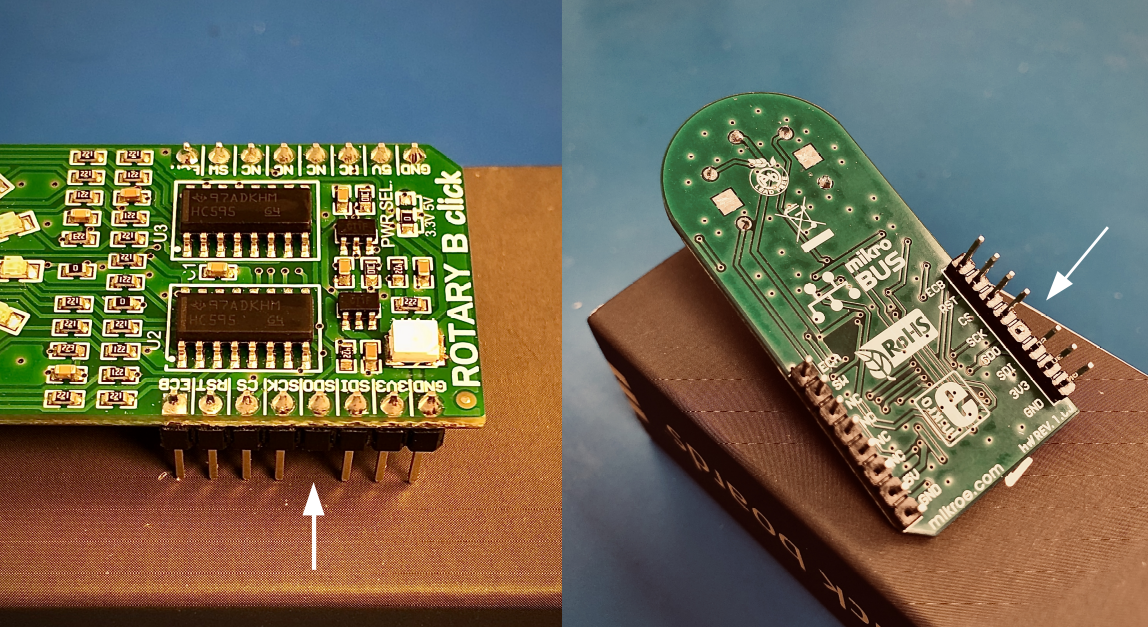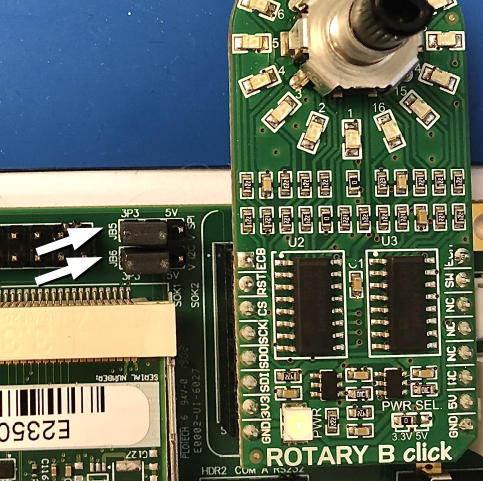Difference between revisions of "Getting Started with the DEV-IOT6U"
m |
(Added note about USB port B operation) |
||
| Line 46: | Line 46: | ||
** '''password: emac_inc''' | ** '''password: emac_inc''' | ||
* Use command "ifconfig" in the terminal session to find the device's IP address that can be used during the development process. | * Use command "ifconfig" in the terminal session to find the device's IP address that can be used during the development process. | ||
| + | {{note | USB Port B (JK5) is disabled by default. Jumper JB9 must be in position B followed by command "gpioset gpiochip2 2=0" to enable. This disables the USB Port C (JK7) device port. Reverse the process with JB9 in position A followed by command "gpioset gpiochip2 2=1"}} | ||
== Development == | == Development == | ||
Revision as of 10:45, 14 October 2020
This page outlines a basic guide to getting starting using the DEV-IOT6U.
Contents
General Information
What Comes with the Development Kit
- SoM-IMX6U-120R2 (528MHz iMX6UL 4GB eMMC, 128MB SoM, connected to Carrier Board)
- SoM-112ES-131R1 (Dlx Carrier with Wifi/BT & Audio)
- 5V 3A Wall Power Supply
- 10 Pin Com to DB9 Cable 12"
- RJ45 to RJ45 Ethernet Cable 7'
- USB2.0A Male to Micro-USB Male 6'
- 2.4 & 5GHz 100mm Wifi Antenna
- MikroBus ROTARY B click
| NOTE |
| Do to a design flaw in the MikroBus Rotary B Click, the card does not allow another SPI device to be present on the SPI Bus. The SoM-IMX6U uses the SPI Bus and the presence of MikroBus Rotary B Card prohibits the SOM from booting. To alleviate this issue, the pin labeled “SDO” must be cut and jumpers JB5 and JB6 on the Dev Kit Carrier Board (SoM-112) must be set to 3P3 (see figures below) |
Tools Required
- Desktop PC (Linux or Virtual Linux Machine)
- Instructions for Downloading a Virtual Machine with EMAC OE SDK pre-installed
Setup
1. Install EMAC OE SDK on your computer.
- Installation options are linked HERE.
2. Make the following cable connections using the cables provided:
- Board Micro-USB to USB Desktop
- Board Ethernet to Ethernet Network
- 5V Wall Power Supply to Board Power (may be left unplugged from wall until Step 3)
3. Open Minicom and create a terminal session with the DEV-IOT6U
- After supplying power, boot messages will be displayed followed by a log in prompt.
- somimx6ul login: root
- password: emac_inc
- Use command "ifconfig" in the terminal session to find the device's IP address that can be used during the development process.
| NOTE |
| {{{1}}} |
Development
There are two options in development with this device:
1. Using the EMAC OE SDK on terminal. [ Getting Started with the EMAC OE SDK ]
- or
2. Using the EMAC OE SDK on Qt Creator. [ Getting Started With Qt Creator ]
MikroBus Rotary B Click
EMAC has provided a MikroBus Rotary B Card which provide a number of LEDs and a Rotary Switch to allow for easy demonstration and interaction of the Eval Kit. Demo/Example Software is provided that interacts with this Card. This Software can be modified by the user as an exercise in using the development tools.
NOTE: Do to a design flaw in the MikroBus Rotary B Card which does not allow another SPI device to be present on the SPI Bus. The SoM-IMX6U uses the SPI Bus and the presence of MikroBus Rotary B Card prohibits the SOM from booting.
To alleviate this issue, the pin labeled “SDO” must be cut and jumpers JB5 and JB6 on the Dev Kit Carrier Board (SoM-112) must be set to 3P3 (see figures below).


Demo
Proceed to this page for an example demo of the MikroBus Rotary B Click on the DEV-IOT6U: